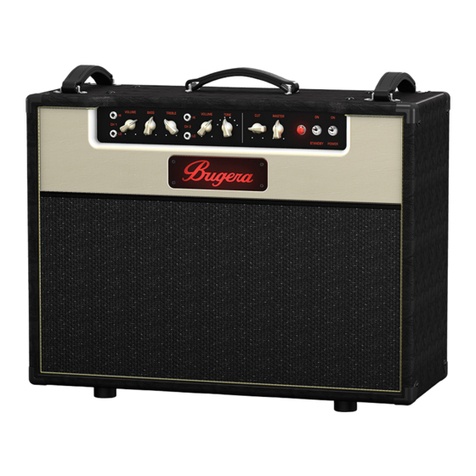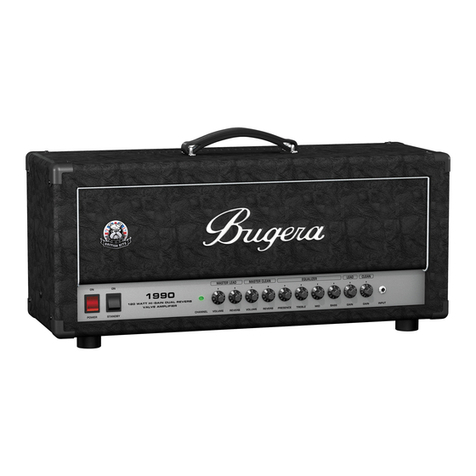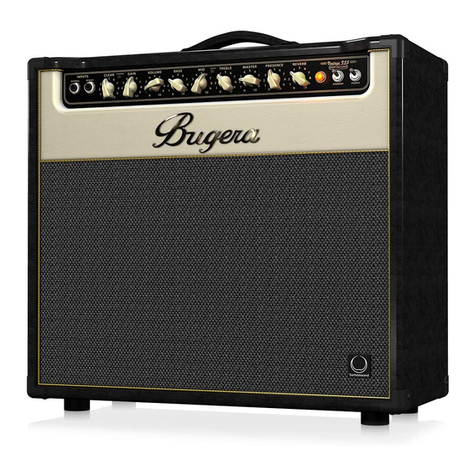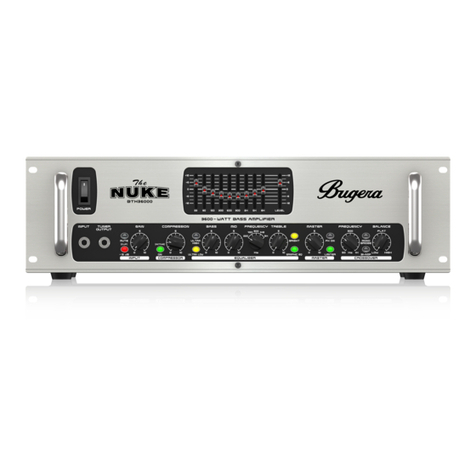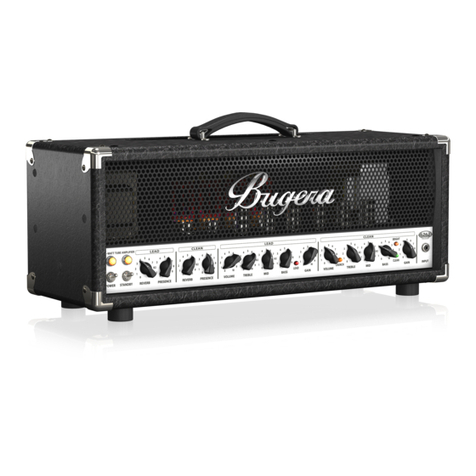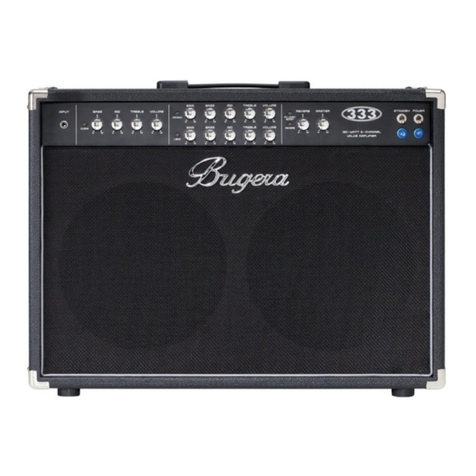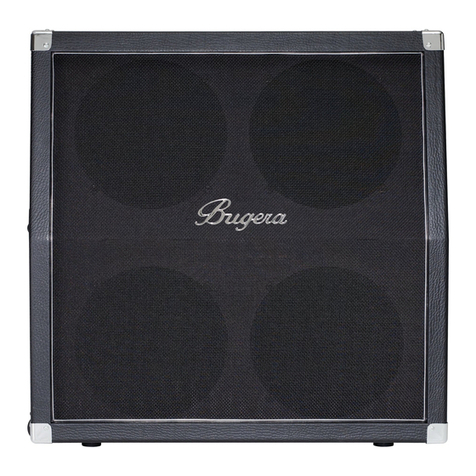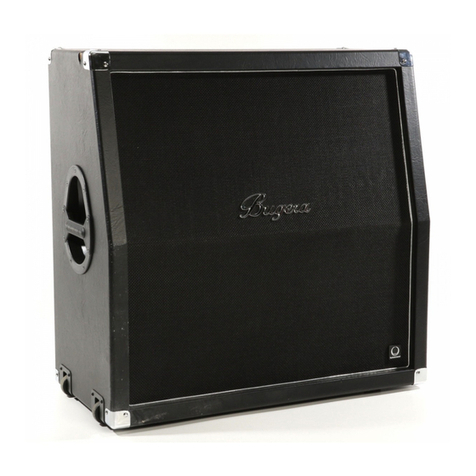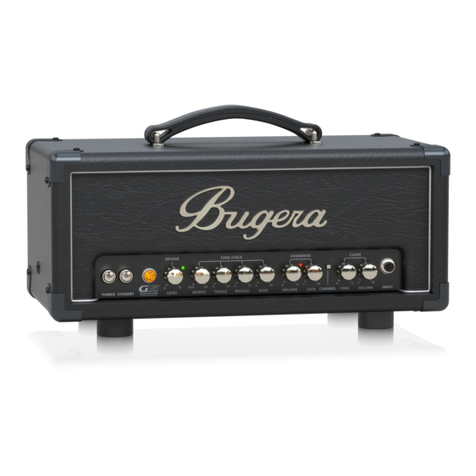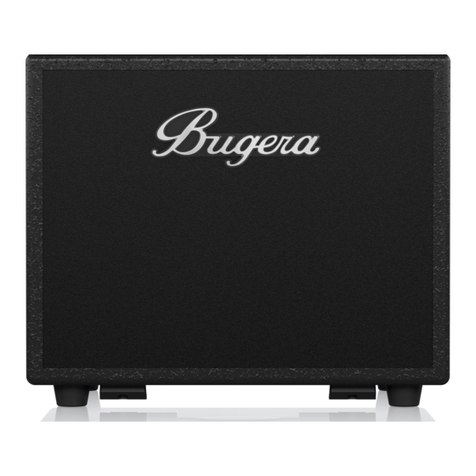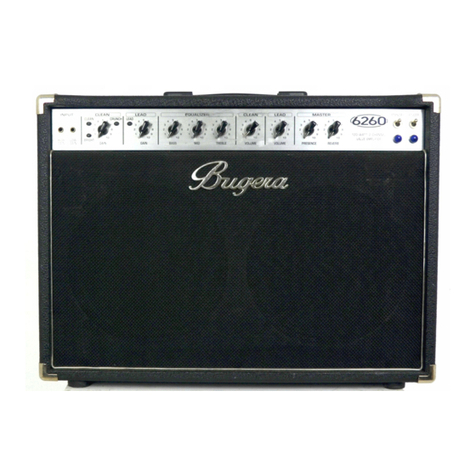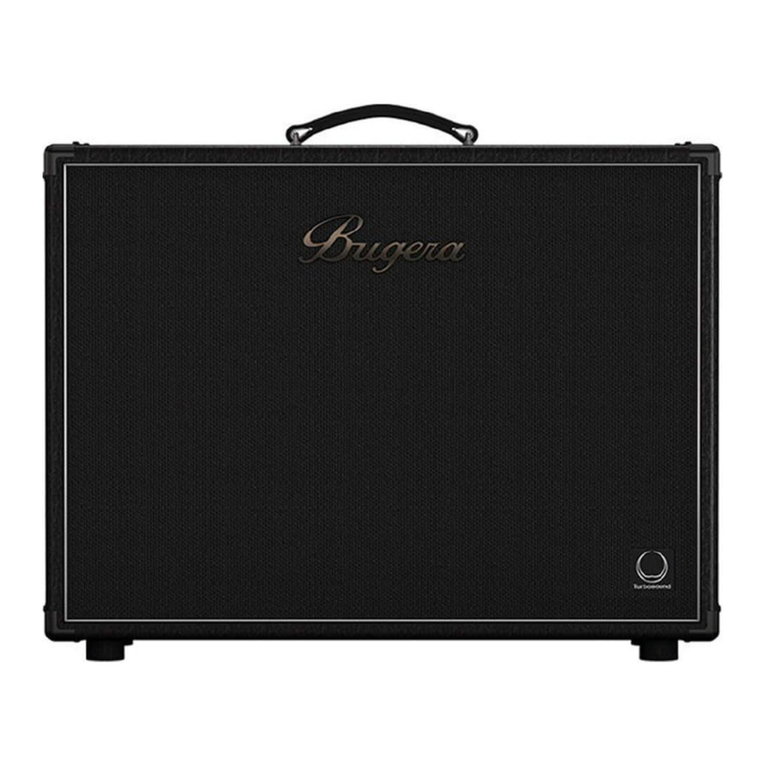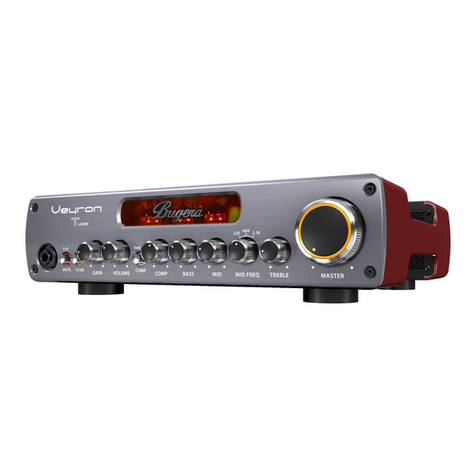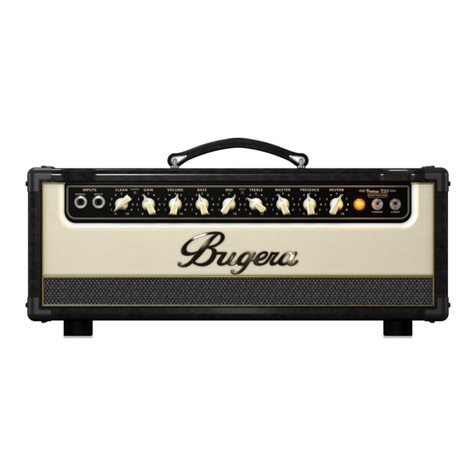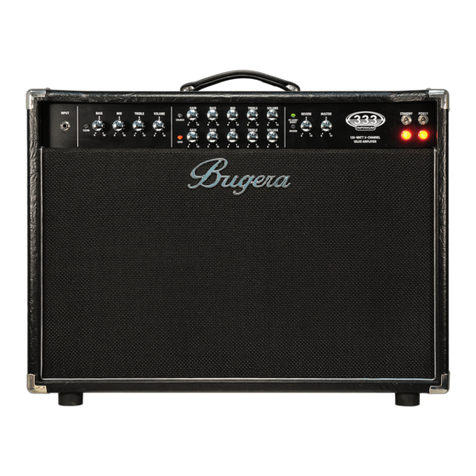***WARNING***
These amps carry a very large, potentially lethal dosage of electrical charge, EVEN WHEN THE
* AMP IS TURNED OFF AND UNPLUGGED! Those not familiar with electrical safety precautions
should not attempt to perform these instructions.
It is important to purchase and install a matched quad set of power valves to ensure that the valves
$
all draw the same amount of current.
Most BUGERA amps are equipped to change freely between 6L6 or EL34 style valves. Users may elect the modern
west coast sound of 6L6 valves (Rectier, SLO) or the classic British grind of EL34s (JCM) by changing the output
valves, ipping a switch and adjusting the bias knob. BUGERA has also developed a line of valves that are specically
matched with these amps to give optimum balance and compatibility. With a matched quad set of BUGERA power
valves, coupled with the simple setup procedure, the biasing process becomes so easy it can be done by virtually
anyone with a volt meter.
By setting the bias on your amp, you are determining how much idle current is running through the valves. The
current is adjusted by measuring and adjusting the voltage at the Bias Test point inside the amplier. Follow these
instructions to change the output valves and adjust the bias.
Instructions
CAUTION: WE HIGHLY RECOMMEND THAT BIAS ADJUSTMENTS BE CARRIED OUT BY QUALIFIED
! PERSONNEL!
Turn the STANDBY and POWER switches to the “Off” position. 1 DISCONNECT the power cord from the mains
outlet!
Unscrew the 2 screws on each side of the amp to remove the back plate.2
Remove the 4 old power valves from their sockets. These are the larger valves and can be removed by pulling 3
directly upward while gently rocking them back and forth (DO NOT twist).
Insert the new set of matched BUGERA power valves into the empty sockets. Make sure that the keying pin on 4
the bottom center of the valve is properly aligned with its respective hole.
Flip the BIAS SELECT switch to the appropriate valve type (6L6 or EL34).5
Turn the Master Volume control down to 0. If biasing an amp head, make sure it is plugged into a cab.6
Plug in the power cord and turn the POWER switch 7
on. Before setting the bias, verify that the mains
voltage actually matches your country version ac-
cording to the table on top of the following page.
Turn the STANDBY switch on. The voltage of the 8
power valves must now be measured by plugging
a volt meter into the BIAS TEST RCA jack. Make
sure the meter is set to 100V DC (direct current)
measuring range, and beware not to short the
RCA contacts.
While reading the measurement on your volt meter, turn the BIAS ADJUST control so that the bias is set for op-9
timal performance for the type of valve. The chart on the following page will display the desired voltage for your
new valves. Biasing a valve “too hot” (too much idle current) can reduce valve life and potentially put strain on
the amp’s output transformer. Biasing “too cold” (too little idle current) may cause the tone to sound gritty and
distorted. Deviating from the recommended bias settings should only be done by a qualied professional.
The bias tends to drift slightly after the amp has had a chance to warm up for a few minutes. We recommend 10
ne-tuning the bias voltage after 10 minutes of operation.
Once the bias is set, play through the amp to ensure that the tone sounds right.11
Replace the back plate with the original screws.12
It is a good idea to check the bias again after six months to ensure that the bias knob has not moved on its 13
own due to vibration. If you decide to change back to the original valve type, you must repeat the entire bias
process again.

